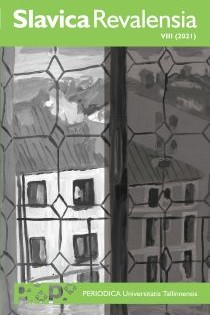Abstract
The article offers a list of possible iconographic subtexts of Osip Mandel’shtam’s translation of the beginning of Petrarch’s sonnet CCCXIX («I dì miei più leggier che nes(s)un cervo / Fuggir come ombra, et non vider più bene / Ch’un batter d’occhio, et poche hore serene, / Ch’amare et dolci ne la mente servo»). The most likely visual source shaping the word choice of Mandel’shtam’s translation (“Promchalis’ dni moi — kak by olenei / Kosiashchii beg. Srok schast’ia byl koroche, / Chem vzmakh resnitsy. Iz poslednei mochi / Ia v gorst’ zazhal lish’ pepel naslazhdenii”) is the tradition of depicting Time as an old man driving a chariot propelled by a couple of deer in editions of Petrarch’s Triumphs (I Trionfi, 1357—74), which Mandel’shtam possibly knew.

This work is licensed under a Creative Commons Attribution-ShareAlike 4.0 International License.
Copyright (c) 2021 Slavica Revalensia
